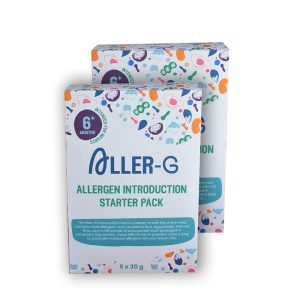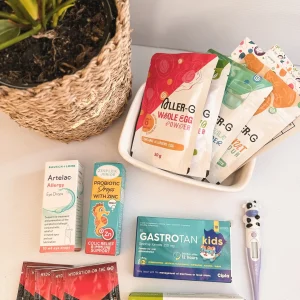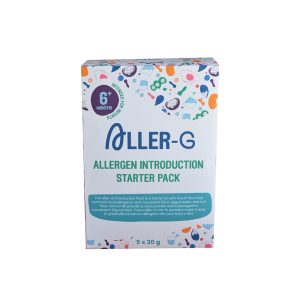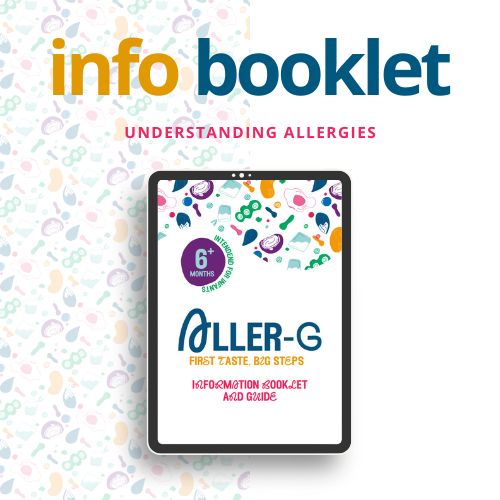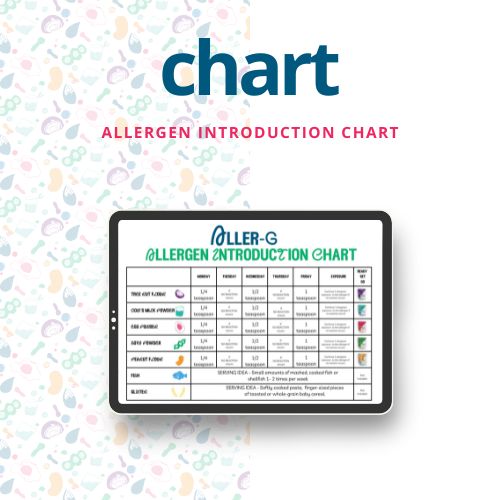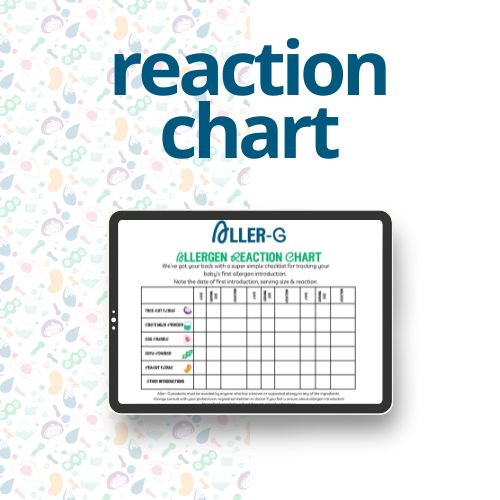firSt Taste, bIg stEps
Don’t know when, how and with what to start your baby’s allergen introduction journey?
At Aller-G, we’re on a mission to banish the fear and uncertainty of allergen introduction for parents everywhere! We know parenting doesn’t come with a handbook, but we believe it should come with awesome, stress-busting products. Our goal? To help you safely and confidently introduce allergens to your little ones, making sure every baby gets a healthy, happy start in life. Think of us as your go-to sidekick in the epic adventure of parenting—here to take the guesswork out and put the love back into solid food introduction.
ShOp
About Us
As a mom of 3, I have always been passionate about babies’ health and developmental milestones. With a decade of experience in the baby food industry, I saw the fear and uncertainty parents face when they needed to introduce allergens.
Inspired to create a solution, Aller-G offers the first shelf-stable allergen powders introduction product in South Africa. Aller-G empowers parents to confidently introduce allergens, backed by research, to guide parents in this journey.
By providing parents with the right knowledge and tools on how to introduce potential food allergens, we aim to provide peace of mind, ensuring every child has a solid start to healthy eating. I am truly excited for every parent to try this product and embrace a new way of allergen introduction.

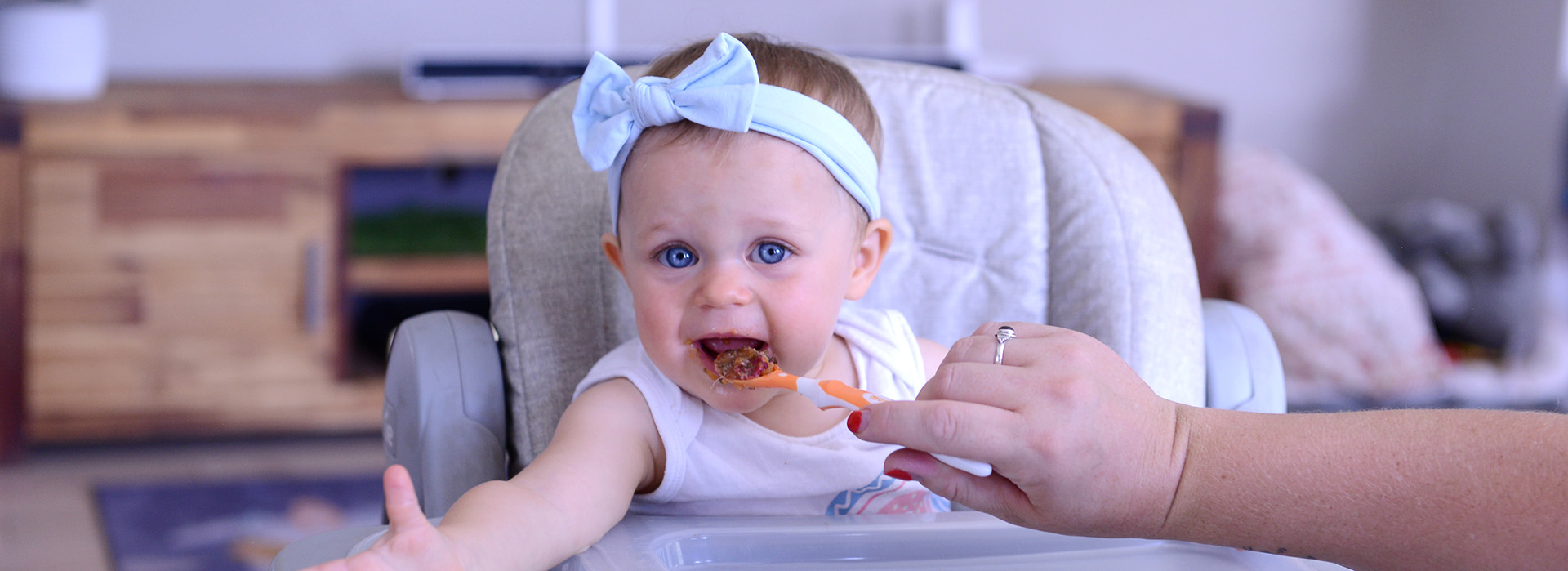
Why cHooSe Aller-G AlleRgeN IntrOduCtiOn StaRter PaCk:
Variety
Powders and Flours
Quality Checks
Money-Saving Start
What you’ll get in each pack:
Peanut Flour
Tree Nut Flour
Soya Powder
Cow's Milk Powder
Egg Powder
Plus an Info Booklet with easy-to-follow guidelines and educational resources on allergies, with a helpful tracking chart.
fAqs
What are the current allergen introduction guidelines?
By 2016, clinical guidelines changed all over the world. The current best practice guidelines recommend introducing all the common food allergens soon on your solids journey, ideally all by 12 months of age. It’s important to introduce one allergen at a time to see the possible reaction.
It’s important to not avoid food allergens unnecessarily, though, remembering that there is a potential risk, not necessarily an actual risk. Avoiding foods and food groups can be your baby’s detriment, as common food allergens are actually some of the most nutrient-dense foods available and full of benefits for growing bodies.
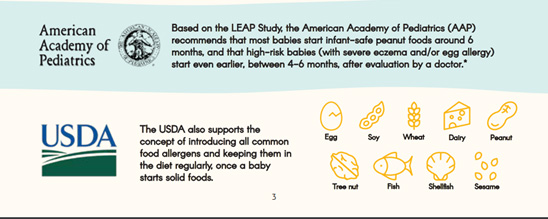
You can read more about the LEAP study here
How Should I introduce Allergen Powders?
Before introducing food allergens, ensure that your baby has already been introduced to foods low in allergen potential. Good examples are fruit and vegetable purées, or steamed vegetables, before starting Aller-G.
- Ensure your baby is in good health before you start.
- It’s best to try one new allergen at a time. That way, if your baby has an allergic reaction, it will be easier to identify which food is causing the reaction.
- If your baby doesn’t have an allergic reaction to the new food, keep giving it to them about twice a week. (Unless you introduce a new food or allergen within that week).
- Serve allergens in the morning or at lunch.
- Mix a small amount of the new allergen powder/flour with your baby’s usual food. If your baby doesn’t have a reaction, you can gradually increase the amount.
STARTER ROUTINE – Check out our introduction & reaction chart
- Day 1 – start with 1/2 teaspoon (approx. 1-2g) mixed into some fruit or vegetable purée
- Day 2 – ½ teaspoon (approx. 1-2g)
- Day 3 – 1 teaspoon (approx. 2-3g)
Three initial exposures should be carried out over 3 consecutive days or 3 days in one week (such as Monday, Wednesday, and Friday)
Be patient if your baby doesn’t eat the allergens right away: It may take several tries before your baby accepts a new food and or texture.
Keep on exposing your baby to allergens if they did not have a reaction.
When should I start allergen introduction?
This product is not intended for infants under 6 months of age & early introduction is not recommended. Before you start the allergen journey. YOUR BABY SHOULD HAVE BEEN INTRODUCED TO foods low is allergenicity. Good examples are vegetable & fruit purées or Baby Led Weaning steamed vegetables before starting Aller-G.
From 6 months, along with breast milk or formula, infants should be fed a variety of foods.
NEVER SERVE A BABY FOOD YOU KNOW THEY ARE ALREADY ALLERGIC TO.
Always consult your heathcare provider for advice.
Why should I use Aller-G over whole foods?
Each Aller-G pack contains enough of each potential allergen for 3 initial exposures. Start with 1/2 tsp (1-2g) and increase gradually. Approximately 11-13 more teaspoon servings can be used over the course of the next few months, saving you money in the long term. Our packs also offer you variety by including 5 of the main food allergens commonly found in South Africa. They’re all in the form of easy-to-use powders and flours, that can be mixed into foods that your baby is already familiar with, and they’ve been packed in an FSA certified facility.
What are the most common food allergens?
According to the WHO Codex for Allergens, the “Big 9” refer to the nine foods that are responsible for over 90% of food allergies worldwide. They are:
- Egg
- Cow’s milk
- Soya
- Peanuts (legumes)
- Tree nuts
- Fish
- Crustaceans
- Gluten
- Sulphites (Dried fruit)
Common food allergens vary worldwide and are influenced by a few things like genetics, the foods most consumed in those regions, and cross-reactivity with airborne allergens, among other factors.
What is an Allergic Reaction?
A food allergy is when exposure to a food triggers a harmful immune response. Your immune system triggers cells to make an antibody known as immunoglobulin E (IgE) to recognize the allergy-causing food or food substance, called an allergen.
The next time you eat even the smallest amount of that food, IgE antibodies sense it. Your immune system is signalled to release a chemical called histamine into your bloodstream. It is these histamines that cause the allergic reaction.
Allergic reactions can happen within minutes or have a delayed response over a few hours.
Symptoms May Include
- Rash, hives or itching.
- Swelling of the face, lips, tongue or throat
- Difficulty breathing or swallowing
- Vomiting or diarrhoea
- Cramping and abdominal pain
- Dizziness or light-headedness
See the info sheet in your Aller-G box for more information. If any of these symptoms are observed, stop using the allergen introduced sachet and seek advice from a medical healthcare professional. In the event of possible anaphylaxis, take your baby to the nearest hospital immediately.
What is anaphylaxis?
More serious symptoms can indicate a severe allergic reaction, known as anaphylaxis. Please always consult with a medical professional if your baby has a known allergy, eczema, or family history of allergies.
Anaphylaxis is rare, but it is a medical emergency, and you should get to a hospital as soon as possible.
Symptoms of anaphylaxis may include:
- difficulty breathing or wheezing
- swelling of the tongue
- swelling of the throat—this can cause drooling
- looking pale
- collapse or going ‘floppy’
Go to the nearest emergency room immediately should you suspect anaphylaxis.
Are food allergies and food intolerances the same?
Food allergies and food intolerance are not the same.
An allergy involves the body’s immune system and can be serious. An intolerance is a reaction that doesn’t involve the immune system. If you have a food intolerance, you may experience unpleasant symptoms after eating the problem food, such as gut upsets like nausea or diarrhoea, but you will not have a dangerous reaction. Food allergies affect an estimated 8% of children under the age of 5 and up to 4% of adults. The good news is that there are some children who outgrow their food allergies as they get older.
How should I store Aller-G products?
Store in a cool dry place. Once opened, close seal, refrigerate, and use the products within their Best Before date.
The refrigeration of products, especially nut powders, is just to preserve texture and taste profiles.

hOw tO orDer
Step 1
Add your product/s to the cart by visiting the product page
Step 2
Check out & complete your shipping info (We ship all over SA!)
Step 3
Follow the payment gateway instructions to pay for your order
Step 4
Check your emails for your order confirmation & further communication
Orders take 2-3 days to process and will be dispatched accordingly
Contact Us
We’d love to hear from you! If you’ve got any questions or comments about Aller-G products, please reach out to us.
